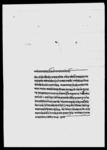A report sent by Subbā Caturbhuja Malla from Almora detailing newsworthy events in 1836 CE
ID: DNA_0002_0022
Edited by
Simon Cubelic and Rajan Khatiwoda
in collaboration with
Pabitra Bajracharya
Created: 2016-10-02;
Last modified: 2018-06-18
For the metadata of the document, click here
The accompanying edition, translation/synopsis and/or commentary are available under the terms of the Creative Commons Attribution-ShareAlike 4.0 International License
Abstract
This document, written by Caturbhuja Malla, reports about the unlawful collection of taxes by Burmese functionaries on Company territory, the conferral of an honorary title upon Charles Metcalfe in a ceremony conducted by Lord Auckland, the ascent of a hot air balloon in Calcutta and the replacement of George William Traill by George Edward Gowan as Kumaon commissioner.Diplomatic edition
[1r]
1श्री1⟪नं.१३९⟫1अल्मोडावाटसुव्वाचतुर्भुजमल्ललेपठायाकोषबरकोफर्द्द¯¯¯¯¯¯¯ ¯¯¯¯¯¯¯2उप्रांन्त:पूर्वअंग्रेजकोसर्हद्दमाआक्आयेवर•ककोइफकोईभंन्याव्रह्मावादसाह
3कामुलुककोआमिलजिमिदारहेरुलेवलवाउठायाछंर•उस्तर्फकोछाउनिवाट
4अंग्रेजकोफौजवंदिहुनलागिरहेछ•लाटमटकलव्साहेवकोतसल्लिनिमि
5त्त्यवादसाहवाटआयाकोषिताप्रषिल्लत्लाठअकलंटसाहेवलेवहूतउत्
6सव्वडाधूमधाम्सगमटकलप्साहेवलाईदिन्याकामगर्या•गोघा⟪वा⟫राकोत
7मासाभयो•२हज्जारफुट्•उभोगैकल्•कत्ताकोगर्मिहावाज्यादाहुनाले६
8कोस्परजिमिमागोघारावस्नगयो•गोघारामाचढ्याकोसाहेवलाईकेहि
9भयेन•वाच्यो•योगोघाराकोतमासाफेरिहुन्याछभंन्यायेतिषवरविस्तारछा
10पाकागजमालेषिआयाकोरहेछ•औ•त्रियेल्साहेवकावदलिमातो
11पषानाकोकर्नेल्गौनसाहेवलाइषुतम्भयेछ•साजव्येहानमाजाहा
12अल्मोडादाषल्हुन्याछःशुभम्¯¯¯¯¯¯¯¯¯¯¯¯¯¯
Synopsis
[1r]
This undated report from SubbāCaturbhuja Malla from Almora (Almoḍā) to his superiors records four different incidents that took place in colonial India: first, the unlawful collection of taxes on the eastern border region of the territory of the East India Company by Burmese revenue collectors and the deployment of the British army stationed in that region in response; second, Lord Auckland’s bestowal of an honorary title upon Charles Metcalfe; third, the spectacle of the ascent of a hot air balloon (govārā)1 in Calcutta; fourth, George Edward Gowan’s succession to the post of Kumaon commissioner previously held by George William Traill.
Commentary
The last three events reported in this letter are elsewhere historically documented: Governor General Lord Auckland’s bestowal of the Knight Grand Cross of the Order of the Bath upon Charles Metcalfe took place on 14 March 1836 (cf. Nicolas 1842: xxxv); D. Robertson conducted South Asia’s first hot air balloon flight in Calcutta on 16 March 1836 (Anonymous 1836, part 2, pp. 8-9); George Edward Gowan succeeded George William Traill as Kumaon commissioner on 7 April 1836 (cf. Tolia 2009: 75). Therefore, the document must have been composed at the earliest on 7 April 1836. Like similar reports by Lokaramaṇa Upādhyāya (see Bajracharya/Cubelic/Khatiwoda VS 2072; Bajracharya/Cubelic/Khatiwoda VS 2073), this letter from Caturbhuja Malla covers a wide array of topics, in this case stretching from British foreign policy with neighbouring kingdoms through ceremonial affairs to technological inventions and information gathering that targets the colonial government. It shows that the Nepalese state at this time stationed informants not only in Calcutta but also in such other strategically important places as Almora.

